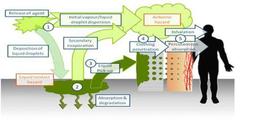Seminar 27th October 2014 1 p.m. 177/2011
Hazard Assessment Simulation and Prediction
Dr Veronica Bowman
DSTL
- Categories
- NGCM
- Submitter
- Susanne Ufermann Fangohr
Summary
This seminar will detail several of the projects undertaken by the Hazard Assessment Simulation and Prediction (HASP) group within Dstl, focussing on Bayesian Inference and Uncertainty modelling to support the detection and mitigation of potential Chemical or Biological (CB) releases into the atmosphere.
In particular methods for predicting the spread and effect of a (CB) release via computer modelling, including an assessment of uncertainty, will be discussed. Predictions can be made, and assessed, through complex chains of computer models. For example, consider predicting casualties from the release of a biological or chemical agent. Modelling such outcomes requires linking predictions of meteorology, atmospheric dispersion, sensor properties and dose response. Each model will be subject to uncertainties including uncertain inputs, uncertain tuning parameters, and uncertain physical mechanisms. Understanding the reliability and accuracy of the overall predictions of casualties requires understanding how the uncertainties from the individual models will propagate and combine.
Bio
Veronica Bowman is a Principal Statistician at Dstl, with a First class Honours degree in Mathematics and a PhD in Statistics, both from the University of Southampton. Following her PhD, she moved to Dstl and is now technical lead for the Statistics and Information Management team. Her research area is the application of Bayesian analysis and data fusion techniques to solve real-world applied problems in the military domain. In particular, the use of Markov chain Monte Carlo (MCMC) and Sequential Monte Carlo methods to make complex multi-parameter inference with scarce data sets in near real time. She also undertakes research into the design and analysis of computer experiments; particularly development of methods for approximating multi-dimensional correlated outputs and data fusion for bio-surveillance applications.
